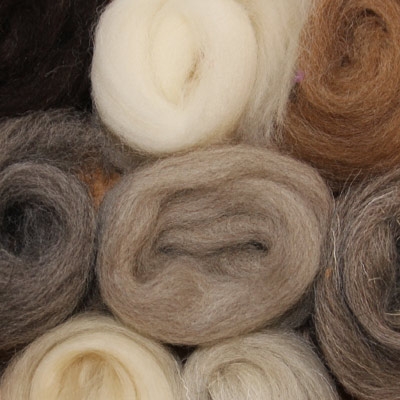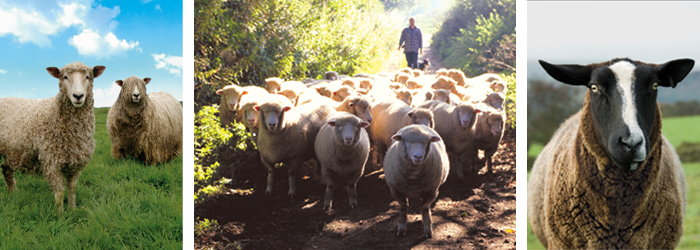FW
Now, members of the Better Cotton Initiative (BCI) can demonstrate their commitment to responsibly sourced Better Cotton directly on the products they sell. This is because of Better Cotton Initiative’s recent announcement of a new on product mark
Paola Geremicca, Director of Fundraising and Communications is thrilled about the launch first on product mark and expects demand for sustainable cotton to increase as consumers learn more about BCI, taking them closer to their 2020 target of 30 per cent of global cotton production added Geremicca.
The BCI on product mark showcases members’ commitment to responsibly grown cotton apart from off product messaging. The on product mark will be the BCI logo accompanied by a text claim, such as: ‘We partner with the Better Cotton Initiative to improve cotton farming globally’. Along with the logo, the commitment claim will be used to explain and substantiate the mark for the consumer.
The BCI logo and claim will represent Mass-Balance Chain of Custody or traceability requirements and will not imply Better Cotton content at this stage. By developing Better Cotton as a mainstream commodity, BCI aims to transform cotton production across the globe. Thus, the BCI on product mark contributes to the goal, helping to influence the choices people make when buying cotton products.
The textile industry has given a thumbs up to the Reserve Bank of India’s (RBI) move to reduce the repo rate, the rate at which the central bank of a country lends money to commercial banks during shortage of funds. The step is being seen as a positive development at the current juncture since it is expected to push up investments in textile industry.
The RBI governor Raghuram Rajan announced a repo rate cut of 50 basis points, to 6.75 per cent from 7.25 per cent, with immediate effect while releasing the monetary policy on September 29, 2015. This is RBI's fourth repo rate cut in the year 2015.
Looking at it as a growth trigger for the economy, Texprocil Executive Director, Siddhartha Rajagopal said that rate cut also means RBI doesn’t anticipate inflation as a key risk to Indian economy. A Sakthivel, President of Tirupur Exporters' Association (TEA) also welcomed the RBI decision. TEA in its statement said banks should pass on this benefit to their customers. This will trigger more investments and export.
www.tea-india.org
Seven textile parks will come up in Rajasthan under SITP (Scheme for Integrated Textile Parks). For each SITP, the Center will provide an assistance of Rs 40 crores. After Gujarat and Maharashtra, Rajasthan will emerge as a textile hub in the future.
Over the last few decades, Rajasthan has emerged as a promising textile center. An abundance of raw material and trained labor has promoted the growth of the textile industry in the state. Rajasthan is a leading producer of polyester viscose yarn and synthetic suiting material as well low-cost, low-weight fabric. The state is the largest producer of PV suitings in the country. Bhilwara is India's largest manufacturer of suiting fabrics and yarn.
Out of 862 spinning mills spread across India, 69 are in Rajasthan. The state has been associated with the production of color fabrics in the Maru-Gurjar tradition since ancient times. The sense of color aesthetics has led to the use of colors and motifs intended for different occasions. Rajasthan has a wide variety of textile traditions, the most famous being the tie and dye or bandhani and block printing methods. Rajasthan contributes over 7.5 per cent of India’s production of cotton and blended yarn.
Azerbaijan, in the Caucasian region of Central Asia was a strong cotton producing country but over the past 18 years, production decreased by over six times. The land volume used for cotton fell by nine times. There was a time when Azerbaijan produced nearly a million tons of cotton.
The decrease in cotton production was a result of falling cotton prices in global markets and low profit margins. Moreover, increasing use of artificial materials worldwide has negatively affected cotton-growing sector. The practice of sharing crops replaced cotton with wheat.
Last year, the country produced 41,000 tons of cotton while 15 years ago production was almost 91,500 tons rising to 5,42,900 tons yielded in 1990. Peak cotton production was in 1981 with 8,31,200 tons. However, yields have increased with the use of more productive technologies and varieties. To reduce the cost of production, companies engaged in cotton production in the country have begun to use new harvesting technologies.
With the introduction of productive varieties, the decline in production has been lower than reduction in acreage. New technologies, minerals, and varieties can lower the cost of cotton production. That is when Azerbaijani cotton can be competitive globally.

Advancements in fleece

In the 13th century, the industry peaked and raw wool became a prime export being shipped all over the world. The material powered a domestic industrial age of textile making and carpet production. Technological advances in clothes manufacturing, rise of synthetic materials, globalisation, a surge of imports from China and Australia, as well as a decline of manufacturing eroded British wool trade.
Wool started to be looked at as a by-product about 10 years ago and because it was no longer economically effective to lug them to the market, farmers began burning fleeces. This was the time when husband-and-wife designer duo, Hannah and Justin Floyd decided to try to come up with a new product. Floyd, a product designer, mixed wool with bio-resin to create a hardy and attractive material, which resulted in a sustainable alternative to fibreglass, Solidwool, which is being used in products from glass frames to chairs. The pair approached the British Wool Marketing Board (BWMB) to secure the raw materials to make the composite. BWMB recommended they use Herdwick wool. The grey, blue Herdwick wool with its white guard hairs made the perfect raw material.
Plymouth University tested the material and found it to be stronger than all other natural composites, including hemp. In February, it was made commercially available and now there are many partnerships in the works, from Derbyshire-based Blok Knives, to the cold water surf brand Finisterre, which uses it for a comb to wax surfboards.
Innovations galore
Tim Simmons another innovator stumbled into the wool business. His sister-in-law bought part of a wool felting business four years ago when a friend was unwell. The felts were used for insulation, however, Simmons and his wife Marty were keen to find more valuable applications for the material to differentiate their business from companies such as Therma Fleece in Cumbria. These companies do a great business with wool insulation products, which is a natural alternative to synthetic rockwool or stonewool.
Simmons’ company, Woolly Shepherd, makes woollen sound absorbers. The absorbers such as such as the cloud-shaped ‘acoustic cloud’, hang from the ceiling and absorb the sound of neighbours’ walking on hard-wood floors. Simmons says they use only British wool because farmers get a raw deal. They could buy wool at cheaper prices from China but the coarse wool is helpful their products and revenues have doubled year-on-year since 2013.
These and other such inventions are helping the British wool industry stay afloat and production is around 30 million kilos a year. Exports have gone up and as per BWMB says after the decade old slump, they are finally witnessing a turnaround.
The upcoming Trans-Pacific Partnership is set to bring huge changes in Vietnam’s bustling garment industry and businesses and investors are preparing for this. A great deal of foreign textile and garment manufacturers are keen to cash in on the tax benefits of the upcoming Trans-Pacific Partnership (TPP) with Vietnam. The agreement promises radical tax cuts for Vietnam’s garment exports. This can be achieved only if they use fabric made locally or in other TPP countries, which excludes China. The agreement is being negotiated by 12 countries, including the US. However, for the emerging country’s thousands of small and medium-sized garment makers, the benefits are less certain.
The Ho Guom Garment factory in northern Vietnam produces 25 million garments every year, which bear the label ‘Made in Vietnam’. However, more than half the material used to make them comes from China. Sourcing locally is tough and expensive. At times it is extremely difficult to find zippers, or some special raw materials. Therefore, they have to contact Ho Chi Minh City, Danang, even China or Taiwan to get samples, so it takes a very long time.
Vietnam’s own textile mills today produce only a fifth of the country’s needs. Thus, there’s completion within the country’s clothing makers to find the right suppliers.
Cambodia's garment unions finally agreed to demand a monthly industry minimum wage of $168 after weeks of haggling. However, they now find that employers are unwilling to consider a rise beyond the rate of inflation. Pro-government and independent unions debated between demanding $158 or $178 a month, wherein one league of independent unions even offered a target of $207 based on a survey of garment workers’ spending habits. This is in light of the ongoing tripartite minimum-wage talks, which are slated to culminate in October. However, recently, 14 unions settled on the $168 figure after more than an hour of internal discussion.
Employers, however, have not shown any sign of accepting these demands and so far have only agreed to increase salaries by the rate of inflation. This is based on a current rate of 3.5 per cent and the current minimum wage of $128, amounts to slightly less than $4.50 a month.Garment Manufacturers Association’s spokesperson in Cambodia, Ke Loo said that the union and government sides had so far, failed to prove to employers that there was a solid economic rationale for a rise in the minimum wage. He added that GMAC’s criteria, such as such as productivity, showed that the minimum wage should actually be decreased, and the unions’ $168 demand was ‘not workable’.
The $168 figure, though, according to Pav Sina, President of the Collective Union of Movement of Workers (CUMW), was based in part on external economic factors. He added that they were trying to considers issues of the economy, living standards, productivity, spending and also inflation to show them to the employers.
Ralph Lauren Corporation has announced that Stefan Larsson, ex-global president at Old Navy will be stepping into the Chief Executive’s role at Ralph Lauren. His appointment will be effective from November, when he will also join the Ralph Lauren Corporation board. Larsson will report to Ralph Lauren, who has resigned from the CEO’s position but will continue to drive the company’s vision and strategy as Executive Chairman and Chief Creative Officer.
Under Larsson’s leadership, Old Navy enjoyed three consecutive years of profitable growth, adding $1 billion in sales. Previously, in 15 years at Swedish retailer Hennes & Mauritz (H&M), Larsson was part of the team that grew sales from $3 billion to $17 billion and expanded the company’s operations from 12 to 44 countries.
Commenting on the Larsson’s appointment, Ralph Lauren said, “My job is to think always about the future of our company and how to move it forward. Stefan Larsson is exceptionally talented, and he will bring our company a fresh and exciting global perspective. Stefan and I have a strong personal bond and share a vision for the future of Ralph Lauren. Now, all the pieces are in place to position our business for continued growth. We have been a leader in our industry for nearly 50 years, and this is just the beginning.”
This announcement follows a number of steps the company has taken in recent years to continue to strengthen its industry leadership, reach new consumers and drive the continued growth of Ralph Lauren Corporation, which last year generated $7.5 billion in sales. In just the past two years, the company continued to significantly expand its luxury business and added three new brands to its portfolio – Polo for Women, Polo Sport, and Denim and Supply.
The company also announced that Jackwyn Nemerov, President and Chief Operating Officer, will retire in November, at which time she will become an advisor to the company. Chris Peterson, President of Global Brands, and Valerie Hermann, President of Luxury Collections, will continue in their current roles reporting to Stefan Larsson.
The company’s brand names, which include Polo Ralph Lauren, Ralph Lauren Purple Label, Ralph Lauren Collection, Black Label, Lauren by Ralph Lauren, Double RL, RLX, Ralph Lauren Childrenswear, Denim & Supply Ralph Lauren, American Living, Chaps and Club Monaco, constitute one of the world’s most widely recognized families of consumer brands.
www.ralphlauren.com
Hennes & Mauritz (H&M) has welcomed the new co-operation between the Swedish and Bangladeshi governments and the UN body ILO. It aims at strengthening the relation with the labour market and promoting social dialogue in the Bangladeshi textile industry. The collaboration agreement was signed during the UN General Assembly meeting in New York.
H&M says Bangladesh is an important production market for the company and it has been working to promote a stable labour market in the country for many years. “Thanks to our long experience from the Bangladeshi textile industry as well as our knowledge within the social dialogue area, we are able to contribute to this new collaboration hands-on,” the company said.
For example, H&M is running a social dialogue program in Bangladesh aiming at democratically elected employee committees at the supplier factories, which is an important part of our fair living wage strategy. It aims to cover all factories that produce for H&M under the project during 2018.
“Furthermore, we collaborate with the ILO and SIDA within skill development in Bangladesh. The project was initiated in 2013, and is also closely linked to our work within the wage area. This work aims at creating a link between actual skills and the wage level as well as improved productivity and occupational safety in the textile industry,” the company added.
www.hm.com
China is planning to boost the textile industry in the Xinjiang region. The idea is to transform Xinjiang into a major textile base in the next five years, with investment, financial aid and subsidies. Xinjiang is a major cotton base with low labor costs. Chinese apparel firms from outside Xinjiang have invested more than 30 billion yuan to establish plants and cooperate with local clothes makers.
Nurturing local companies and attracting capital from further afield, Xinjiang expects output of textile and garment sectors to reach 212.5 billion yuan by 2023, when it will be able to provide jobs for one million people. The northwestern region will soon have fresh opportunities with a bridge linking China to Russia and Central Asia, as the government coordinates a campaign to revive the ancient trade routes known as the Silk Road, to strengthen economic ties with neighboring countries.
Xinjiang borders eight countries, making it important to the Silk Road economic belt. The government has already started improving infrastructure and establishing special trade areas. A special zone has been constructed in the capital of Xinjiang to connect local producers with international markets and help internationalise Xinjiang’s enterprises. The zone, covering 2.4 square kilometers, is scheduled for operation by July 2016.












